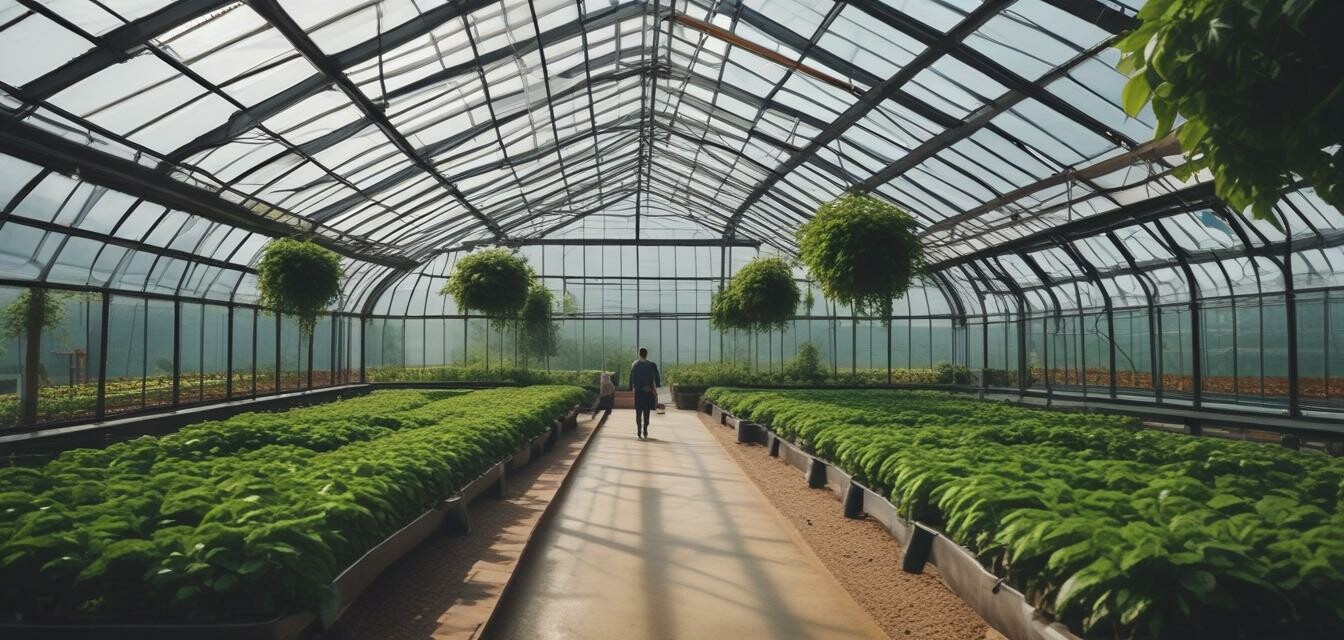
Greenhouse Innovations to Look For in 2025
Key Takeaways
- Technologies enhancing greenhouse productivity are on the rise.
- Sustainable practices are increasingly integrated into greenhouse designs.
- Smart sensors and automation are becoming essential for optimizing plant health.
- Integration of eco-friendly materials is trending in greenhouse construction.
As we move into 2025, the world of greenhouse gardening is set to experience transformative innovations. These advancements are not only designed to enhance the productivity and efficiency of greenhouses but also to ensure sustainability and eco-friendliness in the gardening industry. In this article, we will explore the groundbreaking trends and technologies destined to shape greenhouse gardening in the upcoming year.
1. Smart Automation Systems
One of the most exciting trends is the integration of smart automation systems in greenhouse structures. These systems encompass a range of technologies:
- Automated watering systems based on soil moisture levels.
- Cloud-based monitoring solutions for temperature and humidity control.
- Smart scheduling for nutrient delivery.
Benefits of automation
| Benefit | Description |
|---|---|
| Increased efficiency | Automation reduces manual labor, allowing for more precise control of conditions. |
| Water conservation | Smart systems can optimize water usage, making it more sustainable. |
| Enhanced plant growth | More precise growing conditions lead to healthier plants. |
2. Sustainable Materials
The use of sustainable materials is another trend that is gaining traction in greenhouse construction. Look out for:
- Bamboo and recycled plastics as structural materials.
- Greenhouses designed with energy-efficient glass.
- Use of solar panels to power greenhouse operations.
Advantages of sustainable materials
Implementing eco-friendly materials can have significant benefits:
| Advantage | Impact |
|---|---|
| Reduced carbon footprint | Lower environmental impact through sustainable sourcing. |
| Longevity | Durable materials can lead to longer-lasting structures. |
| Cost savings | Long-term savings on energy and materials. |
3. Integrated Pest Management Technologies
Innovations in integrated pest management (IPM) are changing how gardeners approach pest control. These advancements include:
- Biological pest control options using beneficial insects.
- Advanced pest monitoring systems using cameras and AI.
- Use of pheromone traps that are less harmful than traditional pesticides.
Why IPM matters
Adopting integrated pest management methods has several benefits:
| IPM Benefit | Significance |
|---|---|
| Environmental protection | Minimizes the impact on non-target species and habitats. |
| Cost-effectiveness | Reduces the need for costly chemical treatments. |
4. Vertical Gardening Solutions
With a growing interest in maximizing space, vertical gardening techniques are becoming widespread. Key aspects include:
- Modular planting systems for efficient use of space.
- Hydroponic setups that promote vertical growth.
- Automated lighting systems for indoor vertical gardens.
Why vertical gardening is trending
Vertical gardening offers numerous advantages:
| Advantage | Benefit |
|---|---|
| Space-saving | Ideal for urban gardening where space is limited. |
| Increased yields | More crops can be grown in less area. |
5. Climate Resilient Greenhouses
The focus on sustainability is also inspiring the design of climate-resilient greenhouses that can withstand extreme weather conditions. Key features include:
- Heat-resistant materials for hot climates.
- Tethered structures to resist high winds.
- Temperature regulation systems to protect plants in fluctuating conditions.
Importance of climate resilience
Building climate-resilient greenhouses helps in the following ways:
| Importance | Impact |
|---|---|
| Protection of crops | Safeguards against unpredictable weather patterns. |
| Long-term sustainability | Ensures greenhouse operations can continue despite environmental changes. |
Conclusion
The greenhouse gardening landscape is evolving rapidly, and 2025 is set to unveil some groundbreaking innovations. From smart automation to sustainable construction materials, these trends will not only enhance productivity but also promote a more sustainable future for gardening. By staying informed about these innovations, gardeners can implement new techniques and technologies, ensuring their gardens thrive in the years to come.
Tips for Embracing Greenhouse Innovations
- Stay informed on the latest technologies in gardening.
- Consider your specific gardening needs when choosing innovations.
- Invest in training or workshops focused on new gardening techniques.
Pros
- Enhanced efficiency and productivity.
- Improved sustainability and reduced environmental impact.
- Access to cutting-edge techniques for modern gardening.
Cons
- Initial investment costs can be high.
- Complex technologies may require learning curves.
- Some systems may require ongoing maintenance and management.
For more insights into sustainable gardening practices, check out our section on News and Trends. Interested in optimizing your greenhouse environment? Explore our guide on Greenhouses & Plant Protection for expert advice and ideas.